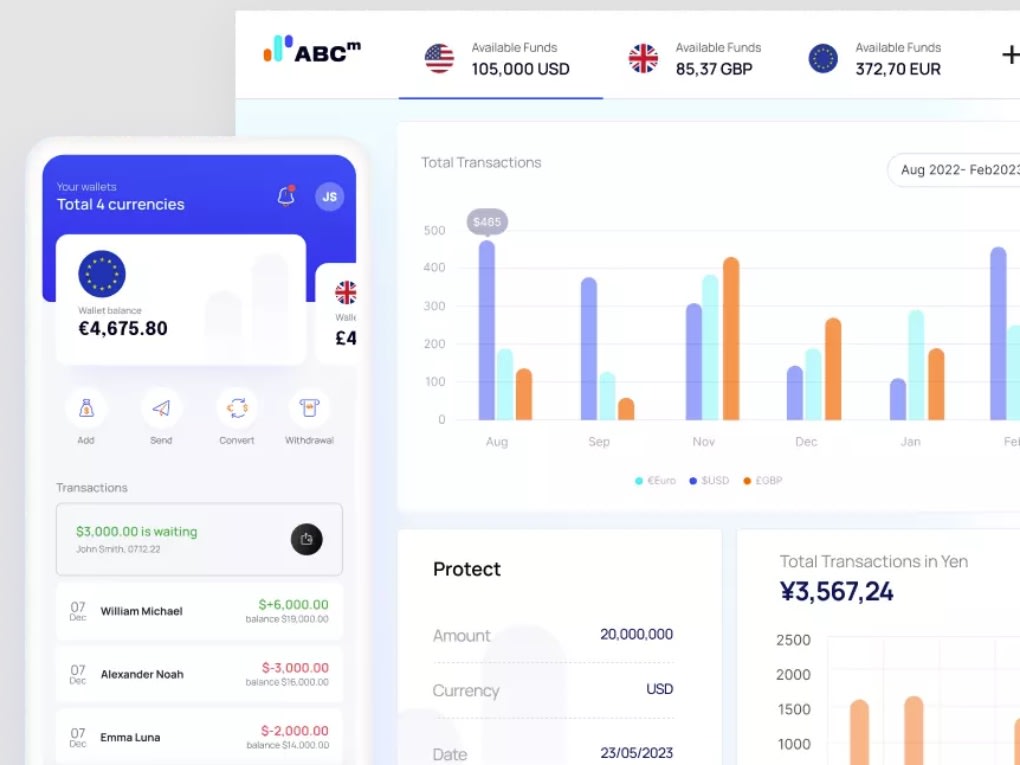Invest
Difference between stocks and bonds
Financial planners usually advise their clients to diversify their investment portfolio by creating a balanced fund composed of both bonds and stocks, among other types of investments.
Difference between stocks and bonds
Financial planners usually advise their clients to diversify their investment portfolio by creating a balanced fund composed of both bonds and stocks, among other types of investments.

Despite creating a risk profile and taking expert advice with regard to allocation, however, not everyone fully understands these investments. Most people wonder which investment option is better in terms of returns, but the answer depends on a person’s risk tolerance.
Here is a simple explanation of stocks and bonds to help non-experts understand the power of their investment.
Stocks simplified
Stocks are shares in a publicly traded company. Owning shares means that the shareholder is a part-owner of the company and has a legitimate claim to its earnings.
However, all publicly traded companies can have thousands of stock shares available, so even if a shareholder is technically a part-owner, their powers over the company are limited.

Earning from stocks
Earnings from stock investments rely on the company’s performance and its perceived value.
The company could also issue dividends to shareholders. However, issuing dividends is not required so shareholders should not expect it from all companies. Likewise, dividend-paying companies can stop distributions anytime.
The dividend that shareholders receive is proportional to the number of shares they own.
Company shares can also increase in value over time, which shareholders can benefit from once gains are realised. Share prices also tend to fluctuate, especially if the company is affected by financial or legal distress.
Short and long-term scenario with stocks
Consider a company that offers 10,000 shares of its stocks at $10 per share. An investor purchases 10 shares for $100 and, in a span of a year, the company’s ventures doubled its value to $20 per share. If the investor sells all 10 shares, they could receive $200, but they could also hold the share.
As a bonus, the company issues 10 cents dividend for each share or a total of $1 dividend for all 10 shares. The $100 principal investment is now valued at $201.
Now consider the opposite situation wherein a new regulation doubles the production costs of the issuing company. The stock price plummets to only $2 per share. The shareholder could either sell all 10 shares for $20 or wait until the value goes up again. Either is a viable option.
If the investor holds on to their shares and, in 10-years’ time, each share is valued at $50, they would have $500 worth of shares from the $100 principal investment.
Stocks are risky short-term investments because of market fluctuations but it can be a good long-term investment if you invest in the right company.
Bonds, in simple terms
Some consider bonds as legally binding I.O.U.s. because investors lend issuers money for a fixed interest over a fixed period. Issuers could be companies or government institutions. Bonds do not turn investors into part-owners.
Earning money from bonds
With bonds, investors receive the invested money plus interest after a specified period—no more, no less. Investors could earn more by investing or ‘loaning’ money to entities that promise higher interest rates, but that may be more risky because high rates are usually offered by less financially stable companies.
Bonds offer a stable, regular, and predictable income stream from interests, and some government-issued bonds also offer local and state tax exemptions.
Bonds offer more security with investments, but returns tend to be fixed regardless if the issuing entity experiences high growth.
Short and long-term scenario with bonds
Consider the scenario where the investor purchases $200 worth of bonds with a 10-year maturity. The bond would have an interest rate of 5 per cent that is payable semi-annually.
According to the terms of the bond, the will receive $5 interest payments semi-annually ($10 annually) for 10 years, for a total of $100 gain. When the bond matures after 10 years, The $200 initial investment is now worth $300—the total of the debt plus interest.
Things only become complicated when bond issuers are unable to make payments.
Investors who want to focus their portfolio on bonds are advised to invest in several bonds with varying interest rates since they’re not the type of long-term investments with significant returns.
Bonds are also affected by inflation rates. Even if the bond promises a bigger return than expected, inflation may decrease the value of the accumulated income by the time the bond matures. For instance, the purchasing power of $1 in 2007 is $1.24 in 2017, which means $124 is needed in 2017 to buy any item worth $100 in 2007.
Assuming that the inflation rate would be 3 per cent for the next 10-year period, a person would need $134 in 2027 to purchase anything worth $100 in 2017. When inflation is applied to the example of bond investment above, the actual gain would be less than $75.
Worst case scenario
Let us consider the worst case scenario: the issuing company files for bankruptcy.
When this happens, shareholders would be worse off because they will be the last to receive compensation. In most cases, they don’t receive any compensation. Since the company has to sell all its assets and pay its debts first before splitting the remaining money among the ‘owners.’
Bond investors, on the other hand, will be one of the first to get paid along with creditors when company assets are sold. This adds a level of security to bond investments.
Comparing stocks and bonds: How much to invest
It is important to understand investment risks and diversify portfolios to offset potential losses. While the values in the sample scenario are purely fictional, they can reflect realistic outcomes.
Stocks can outperform bonds in the long-term, while bonds can offer better security when the company invested in fails.
Both asset classes have risks and investors should gauge how much risk they can tolerate. Investors should also take other factors, such as their current age and the age in which they will need to use their money, into consideration.
Investors are not limited to these two types of investments. It is better to seek the advice of licensed professionals who can make asset recommendations based on the investor’s objectives and circumstance.
This information has been sourced from Nest Egg.
About the author

About the author


Stock market
International stocks: Diversifying your portfolio beyond Australia
In an increasingly globalized market, Australian investors have the opportunity to enhance their investment portfolio by incorporating international stocks. Diversifying your investments globally can ...Read more

Stock market
Stock market rally likely to continue regardless of Fed minutes tone, says deVere CEO
The bull run that has propelled Wall Street's major indexes to record highs this month is expected to continue regardless of the tone of the upcoming Federal Reserve minutes, according to Nigel Green, ...Read more

Stock market
US stock rally driven more by valuation growth than earnings, leaving tech names vulnerable: Innova
The strong gains in US stocks over the past year, particularly in the technology sector, have been driven more by expanding valuations than underlying earnings growth, leaving them exposed to a ...Read more

Stock market
Sun Silver to make its ASX debut with a $13 million IPO
Sun Silver Limited (proposed ASX Code: "SS1") has announced the opening of its Initial Public Offering (IPO) today, aiming to raise a minimum of $10 million and a maximum of $13 million (before costs)Read more

Stock market
Nasdaq hits record high, underscores the value of tech in investment portfolios
The Nasdaq Composite's surge to an all-time high last Friday highlights the importance of incorporating technology into investment strategies. Read more

Stock market
Apple sets an unprecedented profit pace within the GAFAM group in 2023
After navigating through the economic difficulties presented in 2022, the technology sector has demonstrated resilience and growth, with many companies seeing increases in revenue and stock value. Read more

Stock market
Fintech startup okoora unlocks over $3 billion in forex savings for businesses
Fintech innovator okoora has announced it has saved customers a monumental amount over $3 billion through international foreign exchange transactions. Read more

Stock market
Google's Gemini edges out ChatGPT4 in groundbreaking AI showdown
Google's latest AI model, Gemini, has edged out OpenAI's ChatGPT4 in a recent set of rigorous multi-discipline tests, marking a significant milestone in the large language model (LLM) sector. Read more

Stock market
International stocks: Diversifying your portfolio beyond Australia
In an increasingly globalized market, Australian investors have the opportunity to enhance their investment portfolio by incorporating international stocks. Diversifying your investments globally can ...Read more

Stock market
Stock market rally likely to continue regardless of Fed minutes tone, says deVere CEO
The bull run that has propelled Wall Street's major indexes to record highs this month is expected to continue regardless of the tone of the upcoming Federal Reserve minutes, according to Nigel Green, ...Read more

Stock market
US stock rally driven more by valuation growth than earnings, leaving tech names vulnerable: Innova
The strong gains in US stocks over the past year, particularly in the technology sector, have been driven more by expanding valuations than underlying earnings growth, leaving them exposed to a ...Read more

Stock market
Sun Silver to make its ASX debut with a $13 million IPO
Sun Silver Limited (proposed ASX Code: "SS1") has announced the opening of its Initial Public Offering (IPO) today, aiming to raise a minimum of $10 million and a maximum of $13 million (before costs)Read more

Stock market
Nasdaq hits record high, underscores the value of tech in investment portfolios
The Nasdaq Composite's surge to an all-time high last Friday highlights the importance of incorporating technology into investment strategies. Read more

Stock market
Apple sets an unprecedented profit pace within the GAFAM group in 2023
After navigating through the economic difficulties presented in 2022, the technology sector has demonstrated resilience and growth, with many companies seeing increases in revenue and stock value. Read more

Stock market
Fintech startup okoora unlocks over $3 billion in forex savings for businesses
Fintech innovator okoora has announced it has saved customers a monumental amount over $3 billion through international foreign exchange transactions. Read more

Stock market
Google's Gemini edges out ChatGPT4 in groundbreaking AI showdown
Google's latest AI model, Gemini, has edged out OpenAI's ChatGPT4 in a recent set of rigorous multi-discipline tests, marking a significant milestone in the large language model (LLM) sector. Read more








